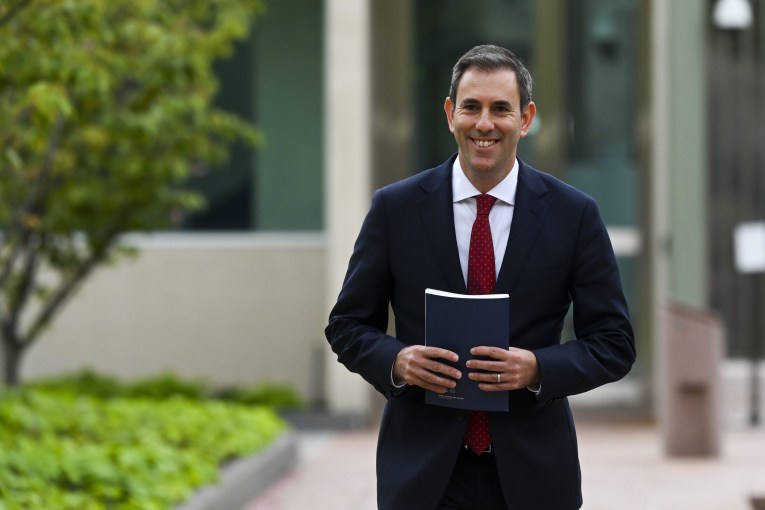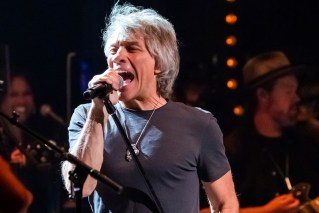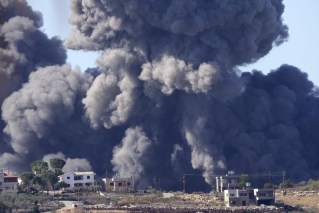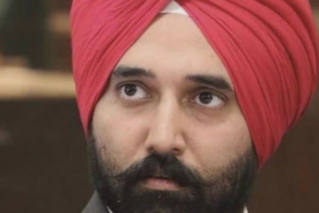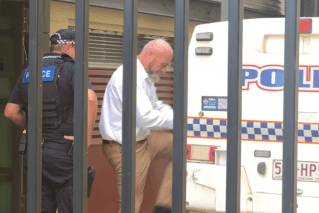Delta at the gates: Vaccine stats reveal weak spots along border
Queensland Health has sent more vaccines to border communities – even giving the jab to people from NSW – as the Delta variant continues its march out of Sydney. Soldiers will soon join police enforcing border restrictions.
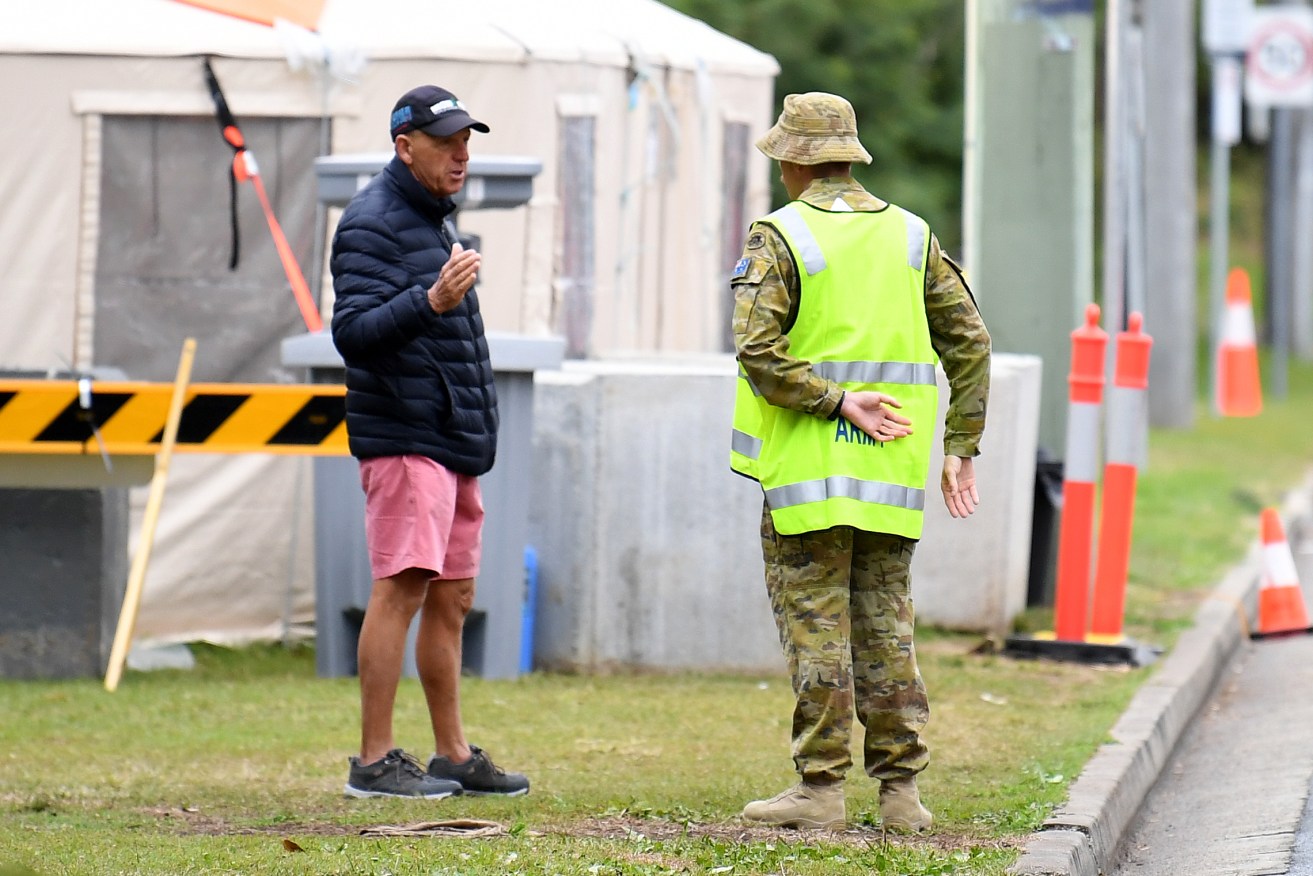
Defence Force personnel will return to the border on the Gold Coast, where they were a year ago, helping police enforce restrictions. (AAP Image/Dan Peled)
NSW Premier Gladys Berejiklian yesterday reported 633 new cases of COVID-19, and today another 681, as the statewide lockdown again failed to reduce the transmission of the virus.
“Everybody’s going to learn to live with Delta,” Berejiklian said, as the cluster that began in Sydney continued to spread across Australia and even NSW.
Somehow, Queensland again recorded no community-acquired cases, having contained the Indooroopilly cluster that was spreading through Brisbane schools.
However, the border controls will be tightened to deal with the threat from NSW, and vaccination will be used to determine entry by essential workers. Premier Annastacia Palaszczuk has requested Australian Defence Force personnel be assigned to help police on border checkpoints, particularly around the Gold Coast where it is logistically and geographically difficult to enforce the rules.
“We need those reinforcements there to keep our borders safe,” Palaszczuk said today, warning that the alternative involved lockdowns.
“It only takes one person with that virus to bring it into Queensland and then all bets are off.”
Queensland had asked the NSW Government whether the border on the coast could effectively be moved south to make it easier to enforce. A similar request was rejected last year, and Palaszczuk today said “it could be getting too late” anyway.
“Time is ticking, we’re seeing an escalation of cases in New South Wales and that’s very concerning,” Palaszczuk said.
Sewage testing has now detected viral fragments in the wastewater at Yamba, on the northern NSW coast, where cases have yet to be reported.
Even with Delta creeping north, new figures provided by Queensland Health show the full vaccination rate varies by almost 20 percentage points across the local government areas on the border.
The Gold Coast, one of the first to be hit by COVID-19, has 24.8 per cent of residents fully vaccinated, which is close to the state average. Goondiwindi is the standard-bearer for the region, with 45.6 per cent of residents fully vaccinated, as of August 14.
Bulloo, the furthest west, has a rate of 23.2 per cent, however the weakest link is Southern Downs, which has only 16.4 per cent of residents fully vaccinated. The council area covers the New England Highway, a popular interstate transport route.
The proportion of residents to have had at least one dose – the measure for allowing essential workers across the border – ranges from 34.5 per cent in Bulloo to 66.2 per cent in Goondiwindi.
On the other side of the border, in NSW, neighbouring areas have among the lowest rates in the state, particularly to the west.
A Queensland Health spokeswoman said efforts were being made to vaccinate as many people in the border communities as possible, including more remote towns such as Mungindi and Goondiwindi.
“As our supply increases, we continue to enhance access to the vaccine through increased capacity, extended hours, additional outreach clinics in rural and remote areas, and more community-based vaccination sites in locations across the State,” the spokeswoman said.
There has been criticism of the low vaccination rate in rural and remote areas, particularly Indigenous communities of NSW, where Delta is now spreading. Across Australia, the rate of First Nations people fully vaccinated is just over half the national average, despite warnings since the pandemic began that they are more at risk.
Queensland Health sought to prioritise First Nations people in the Torres Strait – the changing advice around AstraZeneca disrupted the rollout – and has now extended that vaccination program to Cape York communities.
Health Minister Yvette D’Ath today said the mobile vaccination team that visited Lockhart River this week found 87 per cent of eligible residents were ready for their first jab.
“Let’s beat that number and get out and prove that we can get … those really high rates of vaccinations,” D’Ath said.
Queensland Health will expand the Logan and Caboolture vaccination hubs and run a campaign to encourage different segments of the community, particularly new Australians and First Nations people, to get the jab.
As of Tuesday, 44.8 per cent of eligible Queenslanders had received one dose, and 25.2 per cent two doses, with Queensland Health focussed on Pfizer and largely leaving AstraZeneca to GPs and pharmacies.
With further supplies of Pfizer expected, and some 100,000 people in the queue, Premier Annastacia Palaszczuk said 18,114 people were vaccinated by Queensland Health yesterday.
“And don’t forget that the Commonwealth is responsible for 70 per cent of the vaccines and Queensland Health is responsible for 30 per cent,” Palaszczuk said of the split between State-run clinics and Commonwealth-funded GPs and pharmacies in Queensland.
Overall, Queensland was third behind NSW and Victoria for total doses administered – it was below the national average of 26.9 per cent of eligible people having both doses already – and middle of the pack on a per head of population basis.
Opposition leader David Crisafulli called on Palaszczuk to come up with a better strategy to vaccinating the population of Queensland.
“Cut the mixed messaging, boost the vaccine rollout – it is our ticket to freedom and our future,” Crisafulli said.
Chief Health Officer Jeannette Young yesterday said there were compelling reasons for Queenslanders to be vaccinated.
“I believe that if people want to have freedoms to be able to go about their lives, they need to be vaccinated,” Young said, acknowledging that for a minority it was medically inadvisable.
From 1am Saturday, Queensland will tighten its border controls, and only allow entry from NSW by eligible workers – such as police, health workers and certain construction workers – who can offer up proof they have had at least one dose of vaccine.
It comes as three major unions – the Construction, Forestry, Maritime, Mining and Energy Union, the Electrical Trades Union, the Australian Manufacturing Workers Union, and the Plumbing Trades Employees Union – warn they will rally against any attempt to make vaccinations compulsory on worksites.
The Federal Government will facilitate talks between major employer and worker groups but, like the States, has not moved to make vaccinations compulsory.
Thousands are crossing the Queensland-NSW border every day for work, and Young has ordered closer attention be paid to whether their jobs are “so critical that those people still need to come into Queensland” and risk bringing the virus with them.
Palaszczuk said employers should “do the right thing” and give employees time off to get vaccinated.
The Queensland Government has been asked by public sector unions to provide an additional two days’ leave to workers to be vaccinated. Industrial Relations Minister Grace Grace has said she believed all workers’ requests for time off were being accommodated.
